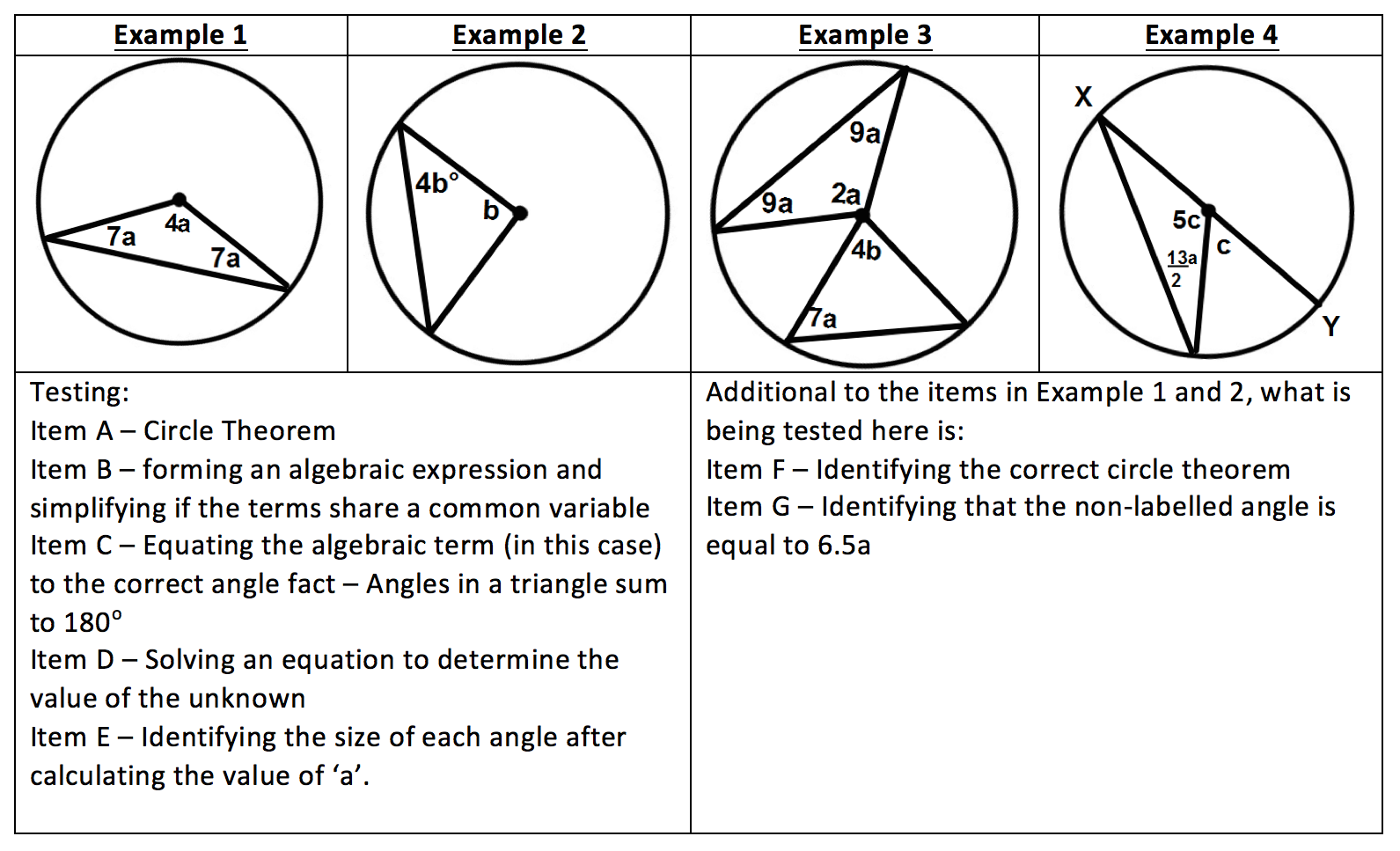Last week, I explored different number based circle theorem problems that can test (a) a pupil’s ability to identify the circle theorem being tested and (b) problem types where a pupil has to find multiple unknown angles using their circle theorem knowledge as well knowledge of basic angle facts.
In this blog, I’m displaying a few different problems within the topic of circle theorems where each angle is labelled as a variable or a term. I am interleaving lots of different knowledge:
- Forming and simplifying algebraic expressions
- Forming algebraic equations
- Equating an algebraic expression to the correct circle theorem angle fact
- Equating two algebraic expressions which represent equivalent angles and solving for the value of the unknown. Furthermore, using the value of the unknown to find the size of the angle represented by the algebraic expression.
I have interleaved fractional coefficients into a couple of questions to add some arithmetic complexity to the questions. Enjoy!
A triangle made by radii form an Isosceles triangle
 The angle in a semi-circle is a right angle
The angle in a semi-circle is a right angle

The opposite angles in a cyclic quadrilateral add up to 180 degrees (the angles are supplementary)
 Angles subtended by an arc in the same segment of a circle are equal
Angles subtended by an arc in the same segment of a circle are equal
The questions for this circle theorem differ in nature from the problem types shown above. Here you are equating two algebraic expressions which represent equivalent angles. We are no longer forming a linear expression and equating it to an angle fact like 180o.
The angle subtended at the centre of a circle is twice the angle subtended at the circumference
In these problems types the key mistake that a pupil may make is equating the angle subtended at the centre to the angle subtended at the circumference without doubling the angle at the circumference. This can be pre-empted by asking pupils a key question of “What is the first step?” The answer I would be looking for after going through a few worked examples would be “you need to double the angle subtended at the circumference.”
 Tangents to circles – From any point outside a circle just two tangents to the circle can be drawn and they are of equal length (Two tangent theorem)
Tangents to circles – From any point outside a circle just two tangents to the circle can be drawn and they are of equal length (Two tangent theorem)
Alternate Segment Theorem – The angle between a tangent and a chord through the point of contact is equal to the angle subtended by the chord in the alternate segment.
I would be keen to hear any thoughts or feedback. Please don’t hesitate to email me on naveenfrizvi@hotmail.co.uk.



Leave a Reply
You must be logged in to post a comment.